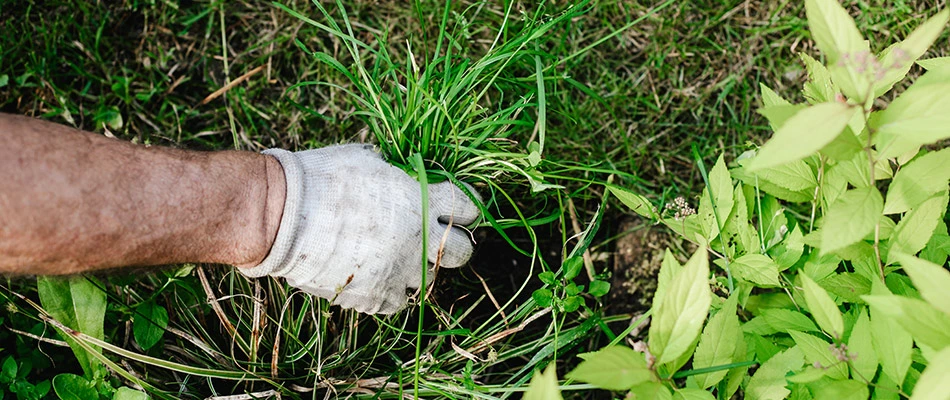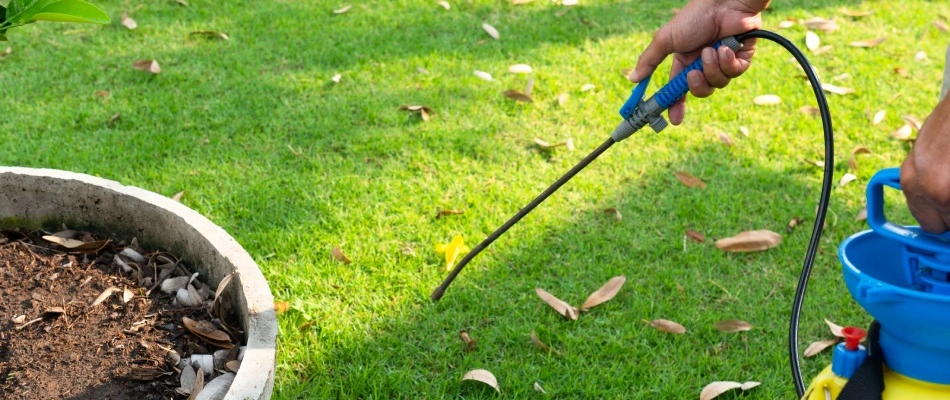Your landscape beds are focal points on your property, and you'll want them to always look their best. However, weeds will drag down their appearance and steal nutrients away from your plants for themselves. While you may want to hand-pull the weeds, doing so can cause the seeds to spread and make your weed problem even worse. Because of this, you should use a post-emergent weed control treatment to eliminate any existing weeds, then apply a pre-emergent weed control treatment in the spring to get ahead of them before the growing season in South Dakota gets underway. Before long, you can say goodbye to pesky weeds and say hello to beautiful, healthy landscape beds!
Hand-Pulling Weeds Can Cause the Seeds to Spread & Make the Problem Worse

Weeds are anything but welcome in your landscape beds; they are not only unattractive, but they can steal nutrients that were intended for your plants for themselves. While hand-pulling weeds may be satisfying and provide a temporary solution, you should opt for another removal method. When you hand-pull weeds, you may not pull the entire plant, instead leaving the roots. Not only can it regrow from there, but this method can cause the weed seeds to spread and make the problem worse.
Common weeds that you may find in your landscape beds include quackgrass, goosegrass, ground ivy, and wild violet.
You can use a post-emergent weed control treatment to eliminate the weeds in your landscape beds.
Removing weeds from your landscape beds is crucial, and the best way to eliminate them is with a post-emergent weed control treatment. Post-emergents are effective on weeds that have already surfaced above the soil and are applied directly to the weed. Then, it'll sink below, traveling down the plant and killing it at the roots; this removal method will yield better results when compared to hand-pulling weeds and will ensure that the weeds can't persevere.
How to Prevent Weeds in Your Landscape Beds Altogether

Weed prevention is the most effective method of weed control, and you can keep weeds out of your landscape beds altogether with a pre-emergent weed control treatment! This blanket treatment acts as a shield, preventing weeds from sprouting through the soil. However, timing is essential with pre-emergents; you need to apply the treatment in the spring, before the weeds have reached a certain point in their growth cycle, to ensure optimal effectiveness. Using pre-emergents will drastically minimize the number of weeds in your landscape beds, benefiting their health and aesthetic appearance.
Weed control experts will usually utilize both pre-emergent and post-emergent weed control treatments to ensure these pesky nutrient sappers don't stand a chance!
Do you have weeds in your landscape beds? Call us to schedule our landscape bed weed control service!
If you have weeds in your landscape beds, then we're the ones to call! At Sharp Lawn Care, we've been tackling weeds for 20 years, and we have everything you need to keep your landscape beds weed-free! Instead of hand-pulling the weeds, we'll use our highly effective post-emergent weed control treatments to eliminate the existing population. We also offer pre-emergent weed control treatments in the spring to get ahead of weeds and prevent them from sprouting. After all, minimizing the number of weeds that sprout makes managing the population easier. With us, your landscape beds will be healthy and weed-free all year!
Our landscape bed weed control service is available as part of our Sharp Bed & Bush Program, and we offer it to residential, commercial, and HOA property owners in and around Sioux Falls, SD, including Tea and Harrisburg. Call us at (605) 251-6880 to schedule our service today! If you're in the Sioux City, IA area, you can reach us at (712) 253-8024. We look forward to hearing from you and helping to eliminate pesky nutrient sappers from your landscape beds!




Comments (0)
Thanks for your comment!
Thanks for your feedback! Your comments have been successfully submitted! Please note, all comments require admin approval prior to display.
Error submitting comment!
There is a problem with your comment, please see below and try again.